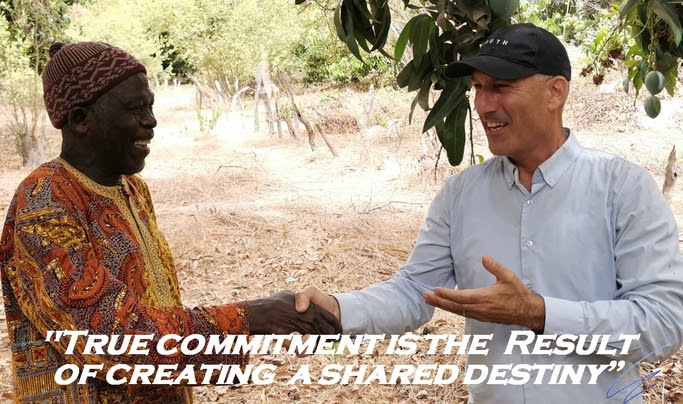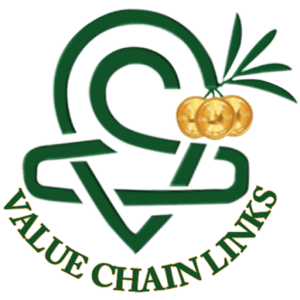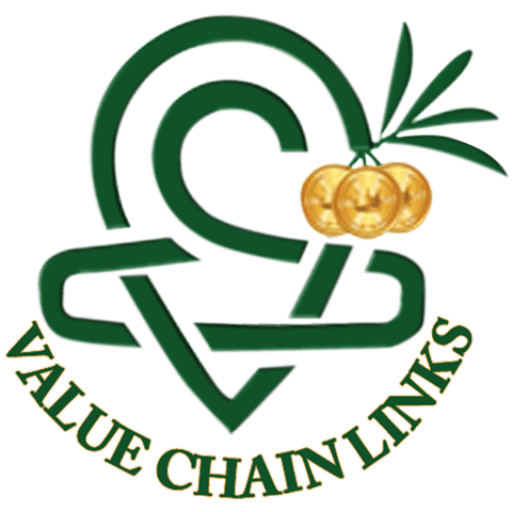WHAT IS THE PREFERRED WAY TO SUBSIDY FARMERS?

BY DR. NIMROD
| According to World Bank estimates, “COVID-19 drove an additional 97 million people into extreme poverty in 2020.”With sore numbers, it is no wonder that poverty is the #1 challenge in the SDG list out of 17 topics. Yet, we are doing a lousy job in changing the tide’s direction.Based on current results, the way we fight poverty is ineffective. Or maybe it can’t be any better!?One may say, “We annually support smallholders with billions of dollars worth of subsidies. What more can we do? Is that not enough?”We can continue to do things as we have done in the past and then “curse the darkness” and the rising poverty. The other option is to change the way we act and light a candle of hope.Which path should we choose? ARE SUBSIDES THE SOLUTION?The World Bank, Governments, Impact Investors, and others provide funds and subsidize technologies, services, and even turn-key projects so that farmers can use them more affordably.You see, by doing this, they enable farmers more affordable purchase goods and services. In other words, they cut their expenses.Ask yourself, “is cutting poor farmers’ expenses will pull them out of poverty?What is going to impact poor farmers’ livelihood better, cutting their expenses or increasing their income?Unfortunately, no country, company, or individual ever shifted from poverty to prosperity by “saving” alone. And anyhow, how much can you “save” when your income is 1.9 $/day or less?There is only one way for shifting from poverty to prosperity, and that is by increasing your income.Increasing farmers’ income can’t be done by increasing subsidies on goods.We must focus on increasing farmers’ income in a sustainable, continuous, and business-oriented manner.But how? WHAT CAN WE LEARN FROM THE AMERICANS?The Americans have set an excellent example of properly approaching national challenges that hold public interest and high economic potential. For example, the Panama canal, the Manhattan Project (atomic bomb), and landing on the moon.Being very pragmatic and business-oriented, President J.F. Kennedy, in his iconic Moon Speech, on September 12, 1962, refers to the substantial planned investment in that project, as well as the long-term economic benefits of it.“And finally, the space effort itself, while still in its infancy, has already created a great number of new companies, and tens of thousands of new jobs. Space and related industries are generating new demands in investment and skilled personnel, and this city and this State, and this region, will share greatly in this growth.” (J.F. Kennedy)Instead of naming the many beneficiaries of the subsidies and funds, the President focuses on the GOAL.Then, using four “Because,” he explains why the moon is the goal. Three of the “Because” relate to the human and American spirit. One is dedicated to how the project will impact the American business and economy environment; “because that goal will serve to organize and measure the best of our energies and skills.”President J.F. Kennedy was right in his projections, and eventually, the “Landing on the moon project” generated 1000’s of new jobs and companies and billions of USD to the American economy.Even if we are not aware of it, this project has changed the course of history, technology, and our lives to this day. |
 September 12, 1962, President J.F. Kennedy’s Rice Stadium Moon Speech. September 12, 1962, President J.F. Kennedy’s Rice Stadium Moon Speech. |
| “But why, some say, the moon? Why choose this as our goal? And they may well ask why climb the highest mountain?… We choose to go to the moon in this decade and do the other things, not because they are easy, but because they are hard, because that goal will serve to organize and measure the best of our energies and skills, because that challenge is one that we are willing to accept, one we are unwilling to postpone, and one which we intend to win, and the others, too.” (the complete speech) Conclusions from the Governmental Moon Subsidize Project. For effective business-oriented subsidies, we need to take into account and answer the following three questions:WHY do we subsidize? e.g., to create jobs and companies.WHAT do we subsidize? e.g., landing a man on the moon.HOW will subsidies transform the economy? e.g., reorganize and express the capabilities and creativity of the local workforce. Note. In his speech, the President hardly mentions any specific technology, although technologies are essential to the project’s success.What do you think applies from this to the use of government subsidies in Africa, India, and other emerging economies, and how would you apply it in practice? THE SUBSIDIZE ULTIMATE “TEST”Subsidizes can be devastating for farmers’ future or the springboard that will catapult them to the life of prosperity; the difference depends on the GOALS of what the subsidies are meant to generate.You see, subsidies recalibrate the entire business ecosystem, making people and companies focus on benefiting the most from what seems as “easy money.” At times that can be at the expense of overall reduced profitability.Therefore, the test of knowing if a subsidy to improve farmers’ lives is doing its job is simple and can be answered with a single simple question –“Following the subsidy, did farmers increase their income? Yes / No.”This is measurable, both on a qualitative and quantitative scale.The growing global number of poor people is an alarming call proving beyond any doubt that today most of the subsidies are aimed at reducing expenses. Unfortunately, reducing costs is not correlated to income increase.In short, current subsidies are ineffective in decreasing poverty. SUBSIDISING “HOPES”Governments wish to see their subsidy funds used well, and for this, they need clear criteria.By asking simple questions, we can discover the criteria that would create the most significant impact.We will start by asking – Is farmers’ goal to buy chemicals, machinery, or services?The answer is sharp – NO!!Chemicals, machinery, and services are mere “tools” that the farmer is using in the process of growing his crop.We hope these tools will help the farmer to produce better products and sell more.We then assume that if the farmer sold more and better produce, he would increase his income and improve his livelihood.In the above scenario, which is familiar to us all, we subsidize stages in “the process” of produce production (e.g., chemicals, machinery, and services).In this case, we face a big problem – what if farmers use those Goods and Services but do not get the desired impact?You see, the farmer hopes to increase his yield, he hopes to improve the quality of his produce, he hopes to find buyers, he hopes to export, he hopes to get a better price for his produce, etc.Today, smallholders’ livelihood is based on “hopes.”As the farmer and we hope for better results, it is sad, but none of us can be certain of the future business results.Therefore, our best assumption would be that farmers’ income next year would remain unchanged. Meaning, without a change, the farmer and his family would remain in poverty.Hence, subsidies are not dealing with business per se but prevent further deterioration of smallholders’ harsh economic and social situation. SUBSIDIESING “RESULTS”For decades governments subsidize “hopes” with no sign of significant positive change in the agro-industry of emerging economies.Here I propose a slightly different approach of deciding how to invest subsidy funds better while decreasing uncertainty, omitting the need to rely on “hopes,” and increasing cooperation within the value chain.This approach is based on subsidizing certain specific results instead of in the uncertain process.What if instead of subsidizing “the means in the process” (e.g., chemicals, equipment, services, etc.) and hoping for results, the government would set Goals and subsidize the Result that matches those goals?To better understand, here are examples of the difference between subsidizing “Process” to subsidizing “Results.” Example 1:(a) Subsidy Process-oriented – the goal enables the farmer to buy more goods and services. Hence, subsidizing goods and services. Expected income – rising prices of subsidized goods and services.(b) Subsidy Results-oriented – the goal is to have farmers growing more and better produce suitable for export (higher prices). Hence, subsidizing the kilograms of “Export Quality” produce sold by the farmer to an export-oriented packinghouse. Expected impact – goods and services providers would show more interest in farmers’ professional and business results. Farmers will have to adapt to the highest quality standards required for selling their produce in the premium export markets. Example 2:(a) Subsidy Process-oriented– the goal is to have a packinghouse for farmers to export their produce. Hence, subsidizing the construction of a packinghouse. Expected impact – packinghouses will be available but not necessarily active or fitted for the actual demands of farmers, traders, and exporters.(b) Subsidy Results-oriented– the goal is to increase fresh produce export. Hence, subsidizing each Kg, the packinghouse is exporting. Expected impact – the entire value chain will have to reorganize, improve collaboration, and work in harmony. Subsidizing the farmers is fine as long as we directly link the subsidy to the desired Result. |
 |
| CHANGE THE RULES OF THE GAMEWhenever I meet with farmers, I ask them about their current practices and consequential results.Too often, they would tell me with tears in their eyes how much they invest in crop protection and yet how much they lose. |
 |
| It is impossible to measure the financial scope of farmers purchasing unnecessary and inefficient products and services.For too many years, governments subsidized “processes,” such as chemicals and equipment, that did not improve the farmers’ income.The only ones to benefit from those subsidies were agrochemical companies and alike.If we want to change the direction of the poverty tide, we need to handle more carefully how we invest subsidies; after all, subsidies recalibrate the entire business ecosystem.To change the rules and the direction of the tide, Biofeed designed, developed, and applied the Green Valley business model.Under the Green Valley business model, its income is a portion of the price received per kg; the more the farmer would earn and profit, the more Green Valley would, and vice versa in the case of lower-income.This is the way to ensure that the entire value chain is Result-oriented; your profit and losses are interconnected with those of the other value chain partners, including the farmers.This creates the commitment of value chain partners and ultimately a shared destiny. Furthermore, it helps to organize the value chain and improve cooperation and collaboration among its parts.Green Valley is very clear about its objectives:WHY do we do it? To create prosperity for smallholders.WHAT do we do? Our equivalent of “landing a man on the moon” is “landing” (exporting) mangoes in premium markets.HOW do we do it? By reorganizing the value chain through a novel business model and applying state-of-the-art protocols and technologies. Do you agree with this?What is your 2-cents advice? |
| I invite you to step up and become an active business partner or investor in Green Valley’s projects and its global vision. |
| TAKEAWAYS» SUBSIDIES ARE DOUBLE-EDGED SWORD – their misuse may harm those we want to help.» SMART USE OF SUBSIDY links it to the outcome and change in the organizational structure and not to the products, services, or the current process. |
| If you enjoyed the article please share it with friends and colleagues. |

